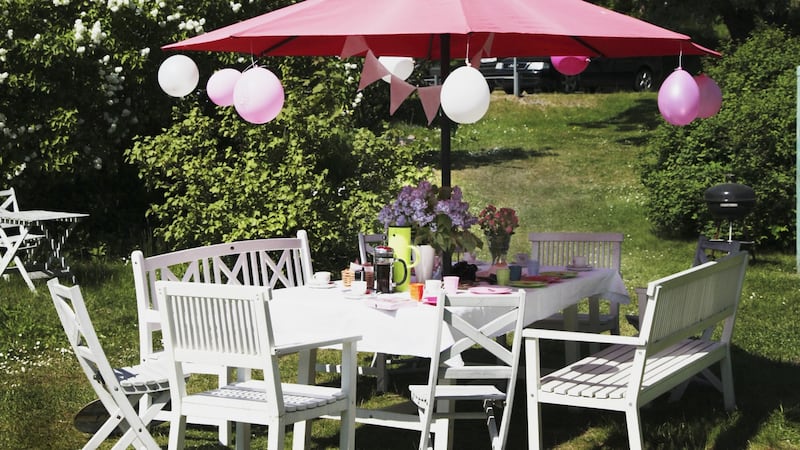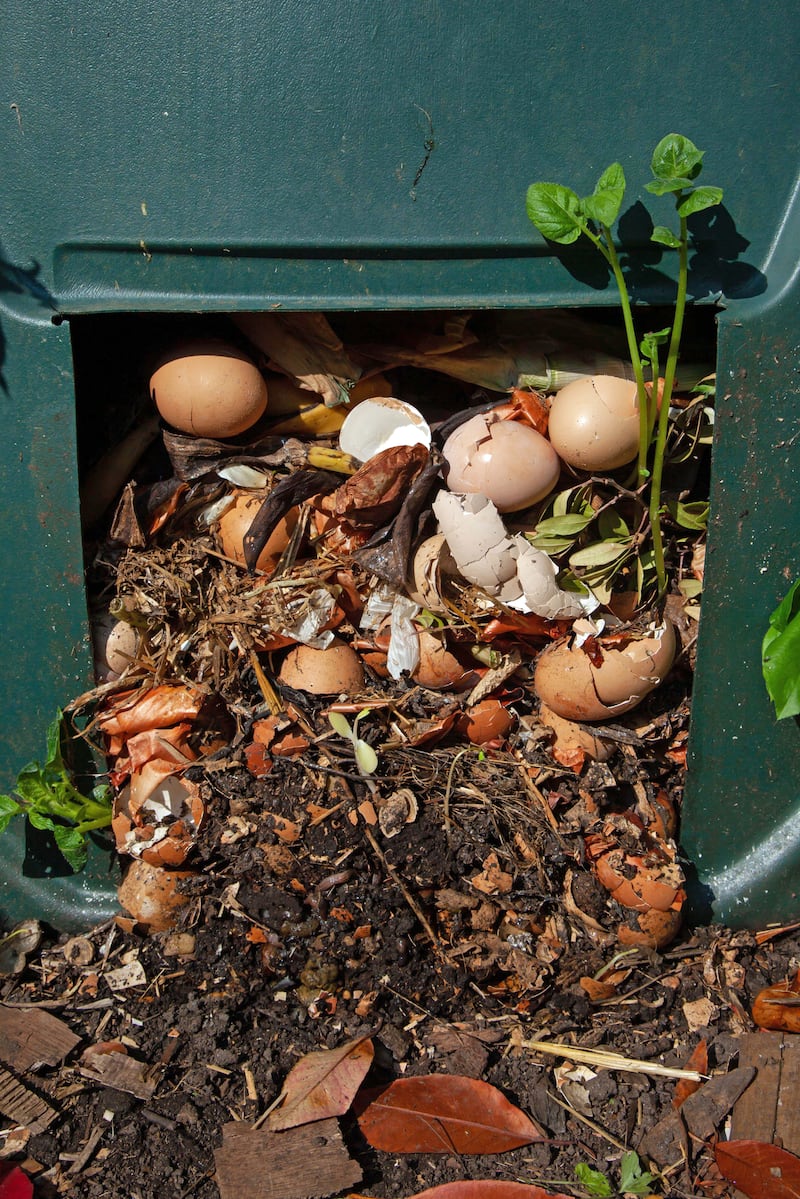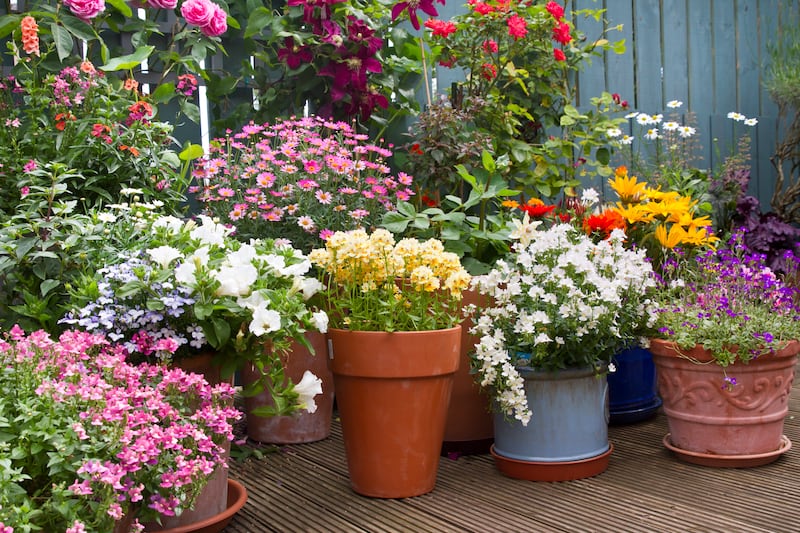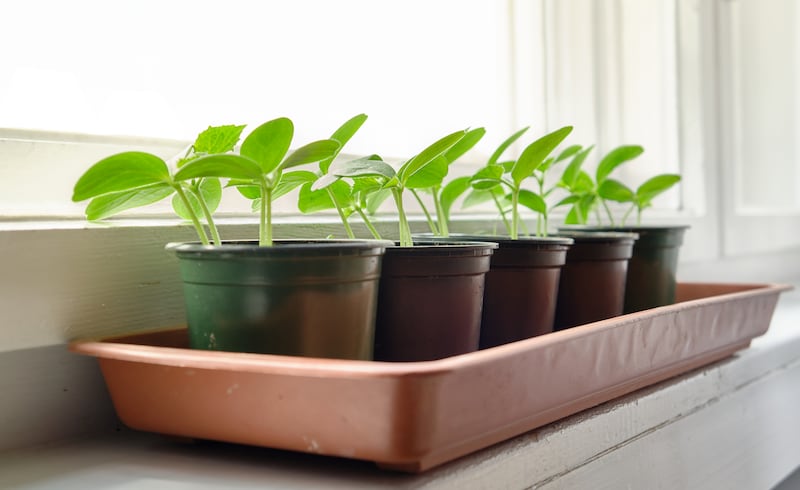For gardeners who are tenants, not having a patch of ground to call your own is a peculiarly painful conundrum. Invest too much passion, time, hard work and money in a rented plot, and you run the risk of having your heart broken when you eventually have to leave it all behind. Do nothing, however, and you find yourself having to constantly suppress the nagging itch to sow and grow, to plant and harvest. Not only that, you miss out on the thousand and one humdrum, dirt-under-the-fingernails experiences that are the making of all good gardeners.
So how best to navigate that fine line? As someone who counts my age in growing seasons, I believe life’s too short to forego the joy of gardening. But when it comes to gardening a rented property, my advice is to go carefully and only with the consent of your landlord. Big no-nos include doing any of the following without permission: hard-pruning established trees or shrubs, using pesticides, fungicides and herbicides, or making any irreversible changes to garden structures and hard landscaping. The same goes for planting trees that might cause problems with shade or damage to built-structures down the line, or bamboos with running root systems that could be problematic in the years to come (grow these in large containers instead).
Also bear in mind that if you’re completely new to gardening, then taking on an established garden in its entirety can be overwhelming as well as expensive. A great alternative is to focus your attention on one area. Ideally, this should be a sunny, sheltered spot with room for seating and some large pots to fill with colourful annuals, hardworking woody evergreens and deciduous perennials and shrubs for year-round-interest. South- and west-facing areas of the garden are your friends in this regard, especially if they have walls to provide additional shelter, while east- and north-facing areas are naturally cool and shady.
If you love the idea of taking the entire plot on but haven’t a clue where to start, then try enlisting the advice of a friend or family member with some gardening experience under their belt. Becoming a member of your local gardening club, the RHSI (Royal Horticultural Society of Ireland, rhsi.ie ) and GIY (Grow It Yourself, giy.ie) are other great ways to tap into the knowledge of experienced gardeners.
Failing that, ask your local garden centre to recommend someone that you could pay for a few hours’ worth of expert advice. Along with a written “To Do” list to guide you, ideally they’d provide a roughly to-scale drawing of the garden identifying any existing important plants and some site-appropriate planting suggestions that will save you time and money in the long run. Essential tools? My must-have list would include a wheelbarrow, garden fork, spade, rake, secateurs and trowel. If budget allows, go for a brand that will last you a lifetime such as Sneeboer. A compost bin is another must. For a super-fast model that can be used for all food and garden waste, the portable Hotbin is a great choice (quickcrop.ie)

If paying for some expert advice is too much of a stretch financially in a world already stretched by the cost-of-living crisis, take some measurements yourself and draw it out on some tracing paper using a scale ruler, marking in any significant established plants. For most gardens, a scale of 1:20 or 1:50 works well. Also take some general photos for reference and some quick portrait shots of any plants you can’t identify. A good garden centre will have knowledgeable staff to put a name to them as well as to give advice on local growing conditions.

Next, try to assess the different microclimates within the garden so that you can plant accordingly. Which areas are sunny or shady? Damp or dry? Warm or cold? Sheltered or exposed? Mark these on the drawing. Is the soil light and free-draining, or heavy and sticky? Is it acidic, neutral or alkaline? Tip: colder, wetter areas of the country tend to have acidic soils while drier, warmer areas tend to have alkaline soils. Your neighbours’ gardens will also offer many useful clues to the growing conditions and kinds of plants that will flourish.
Raising your own plants from seed, cuttings and division is an endlessly rewarding and budget-efficient way to quickly stock any rented garden
You can also do a soil test, of course, but the soil profile in many domestic gardens has often already been disturbed by building work so it won’t necessarily be an accurate representation. This is especially true of modern housing estates where the original topsoil was very possibly stripped away by builders and never properly replaced. Other common problems include buried builder’s rubble concealed beneath the ground, and a soil that’s been badly compacted by heavy machinery. How to tell? If you have a lawn, then patchy grass growth and a tendency to hold rainwater in winter are indicators of a soil that’s compacted and lacking in organic matter. So start by digging any new planting areas over thoroughly and work in plenty of organic matter in the shape of well-rotted manure and/or homemade compost.
Of course, container gardening is the obvious solution for anyone renting who wants to bring their precious plants with them when they move on. Properly looked after, you’ll have some fantastic mature specimen plants to put into your forever garden when the day comes. Large statement containers in particular are also a very effective way to add instant impact. To keep costs down, take a leaf out of the legendary Dublin gardener Helen Dillon’s book and use large galvanised metal rubbish bins as planters. Or ask your local landscaper if they can pass you on any extra-big plastic pots left over from previous jobs. Filled with tall showy plants such as cosmos, astelia, bamboo, dahlias, hostas, sweet pea and some edibles, these will create a glorious splash of colour and scent as well as providing a useful screen when extra privacy is required. You can also use window-boxes to grow a wide range of herbs and salad leaves.

For shadier corners, consider using camellias, Japanese acers, hydrangeas, star magnolia (Magnolia stellata) underplanted with spring bulbs and ground-cover perennials for maximum seasonal interest. All are long-lived and can be taken with you when you eventually leave.
Just make sure to use a really good-quality John Innes compost to maximise the health and longevity of the plants, bearing in mind that any acid-loving species will need what’s known as an ericaceous compost. If you think you’ll need a lot of compost, consider buying it in bulk from a specialist supplier such as landscapedepot.ie
Painting garden furniture, walls and fencing is another quick, cheap way to give a rented garden a dramatic makeover (again, with the permission of your landlord). But keep the colour palette muted and in shades of the same colour (classic greys and sooty greens work best in an outdoor setting) so that it acts as a handsome foil to plants, as well as serving as a sort of visual glue linking different areas of the garden together.

A portable water feature is yet another great way to instantly make the space your own. Howbert and Mays stock a range of very handsome, shallow, circular Corten steel water bowls that make a striking garden feature and also double up as fire pits (howbertandmays.com)
Lastly, raising your own plants from seed, cuttings and division is an endlessly rewarding and budget-efficient way to quickly stock any rented garden. Along with using sunny windowsills as a temporary home for young seedlings, consider making a cold frame using repurposed glass windows or a glass door raised off the ground with bricks or concrete blocks. You’ll find plenty of suitable material going cheaply on sites such as donedeal.ie. Spruced up with a nice lick of paint and placed in a bright, sheltered but discreet spot outside, it will quickly become the engine of your plot.
This week in the garden
April is peak sowing season and a great time to sow seed of many kinds of half-hardy flowering annuals on a sunny windowsill, or under cover of a glasshouse, polytunnel or bright porch for transplanting outdoors in very early summer. These short-lived, but very fast-growing plants, are great for quickly filling gaps in the border or for using in containers and window boxes to create colourful, pollinator-friendly displays. Examples include Cosmos, Nicotiana, Helianthus, Nasturtium, Thunbergia and Ipomoea. Recommended seed suppliers include all good garden centres as well as mrmiddleton.com and seedaholic.com
Climbing and rambling roses and other types of ornamental climbers including clematis need to be trained against garden trellis or a system of horizontal support wires at this time of year to ensure healthy growth and a great display of their flowers. A generous sprinkle of some slow-release organic fertiliser and a mulch of well-rotted manure or homemade garden compost spread around the base of the plants at this time of year will also help to keep them happy and floriferous.
Dates for your diary
Today, Saturday, April 1st (1.30-4pm), Cabinteely Community School, Johnstown Road, Cabinteely, Dublin 18, D18VH73, Alpine Garden Society Annual Plant Sale, with a wide selection of alpine, rock garden and woodland plants, bulbs, ferns and small shrubs for sale and stalls by specialist nurseries (Admission €3).
Also today, and again tomorrow Sunday, April 2nd (11am-4.30pm), Open Day at Bellefield Gardens, Shinrone, Co Offaly, R42NW82, with tours of the garden at noon and 2pm by head gardener Paul Smyth, see rhsi.ie
Wednesday, April 5th (7.30-9pm), Interesting Vegetables & How to Grow Them, a Zoomtalk by Madeline Mc Keever of Brown Envelope Seeds in west Cork on behalf of the RHSI, see rhsi.ie
Sunday, April 16th (10am-4pm), Leitrim Flowers, Anamadu Fields, Kilnagross, Co Leitrim, Introduction to Designing a Cottage Garden, a one-day workshop, €95 (includes lunch & refreshments), prebooking essential, see leitrimflowers.ie












